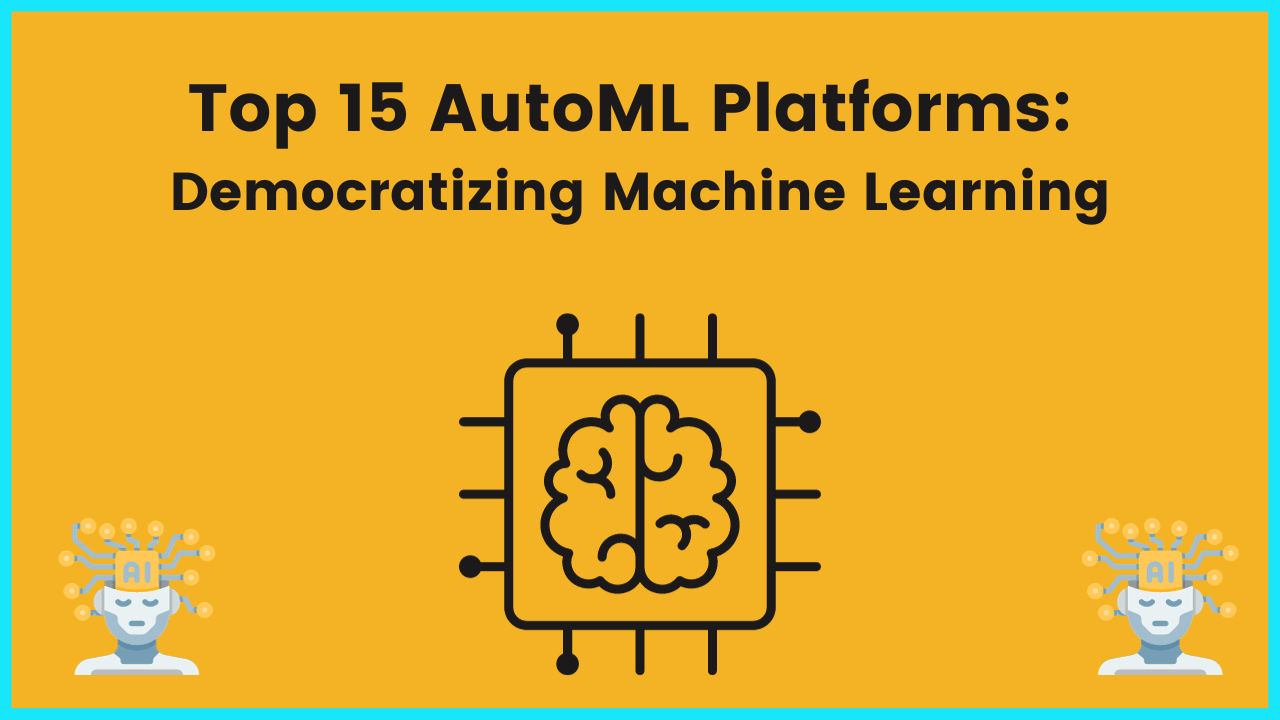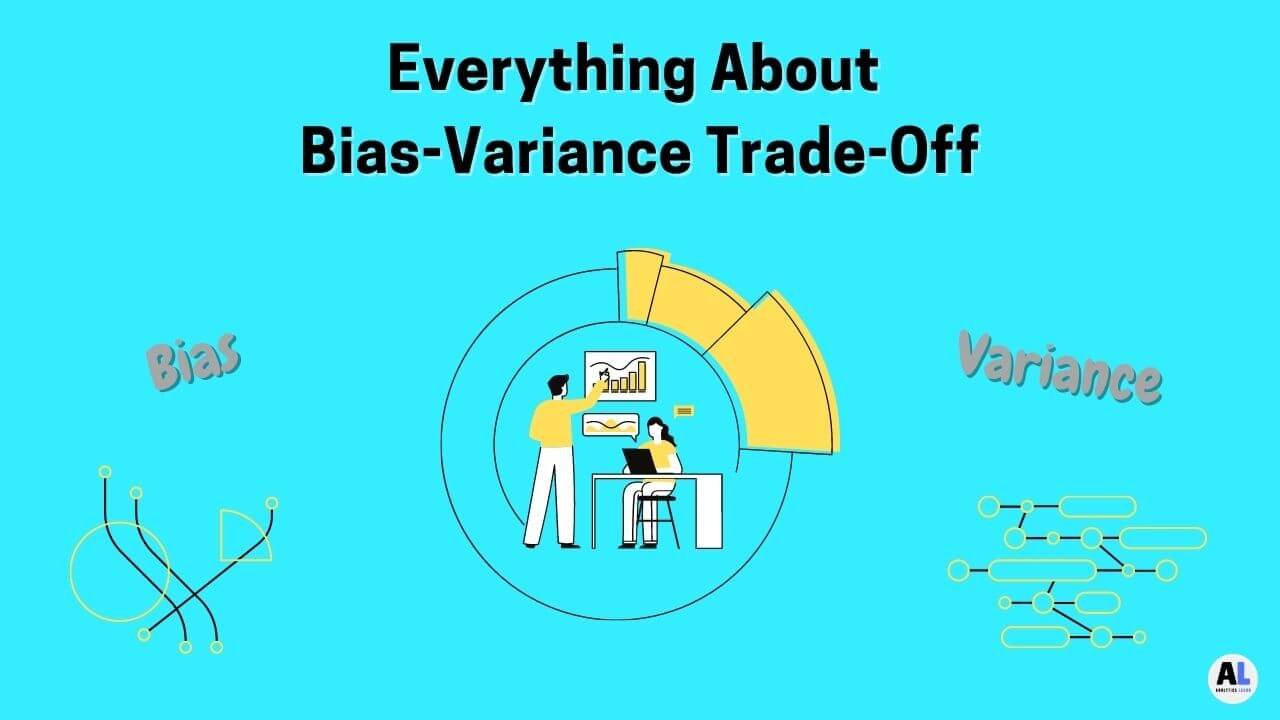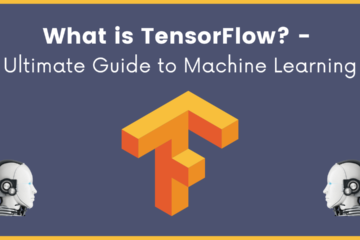In this guide, we are going to see the top 15 AutoML Platforms that are used for Democratizing Machine Learning.
Machine learning and artificial intelligence have become essential tools in various industries, driving innovation and automation.
However, developing machine learning models typically requires significant expertise and resources.
AutoML (Automated Machine Learning) platforms aim to bridge this gap by automating the process of model development, making it accessible to a broader audience, including data scientists, business analysts, and domain experts with limited coding experience.
In this article, we’ll explore the top 15 AutoML platforms that have been leading the charge in democratizing machine learning.
Related Article: Top 10 Python Libraries for Machine Learning
What is AutoML and its platform?
AutoML, short for Automated Machine Learning, is a set of tools, techniques, and platforms that streamline and automate the process of developing, training, and deploying machine learning models.
AutoML platforms are designed to make machine learning more accessible to a broader audience, including individuals and organizations with limited expertise in data science and coding.
These platforms typically automate tasks such as data preprocessing, feature engineering, model selection, hyperparameter tuning, and even model deployment.
Some popular AutoML platforms include Google AutoML, Microsoft Azure AutoML, IBM Watson AutoAI, and H2O.ai, among others.
AutoML democratizes machine learning by reducing the barriers to entry, enabling users to leverage the power of AI for a wide range of applications without extensive manual intervention.
Related Article: What is AutoML: Revolutionizing AI Model Development
Top AutoML Platforms
Here’s a comprehensive article on the top 15 AutoML platforms:
1. Google AutoML
Google AutoML is a suite of tools offered by Google Cloud that enables users to build machine learning models with minimal manual intervention.
It includes AutoML Vision, AutoML Natural Language, and AutoML Tables, among others, for various data types.
Google AutoML leverages state-of-the-art neural architecture search to optimize models automatically. Key Features:
- Image and text classification
- Integration with Google Cloud Platform
- Custom model tuning
2. IBM Watson AutoAI
IBM Watson AutoAI simplifies the machine learning pipeline by automating tasks like data preparation, feature engineering, and model selection.
It provides users with a collaborative environment for building, training, and deploying machine learning models. Key Features:
- Automated model selection and hyperparameter tuning
- Collaboration and sharing capabilities
- Integration with IBM Watson Studio
3. Microsoft Azure AutoML
Azure AutoML is part of the Microsoft Azure cloud ecosystem, offering a user-friendly interface for building machine learning models.
It supports both classification and regression tasks and provides automated feature selection and hyperparameter tuning. Key Features:
- Integration with Azure Machine Learning Studio
- Automated model selection and tuning
- Wide range of algorithms
4. H2O.ai
H2O.ai provides a popular open-source AutoML platform known as H2O AutoML. It offers automatic model selection, hyperparameter optimization, and insights into model interpretability.
H2O AutoML is versatile and can be used for various tasks, including classification and regression. Key Features:
- Open-source platform
- Automatic feature engineering
- Interpretability and explainability tools
5. DataRobot
DataRobot is a robust AutoML platform that accelerates the machine learning process.
It automates the end-to-end machine learning workflow, from data preprocessing to model deployment.
DataRobot offers a range of algorithms and optimization techniques. Key Features:
- Automated model building and selection
- Extensive algorithm library
- Model deployment options
6. Databricks AutoML
Databricks AutoML, part of the Databricks Unified Analytics Platform, simplifies the machine learning process with automated model tuning and selection.
It seamlessly integrates with other Databricks services for a unified data and AI platform. Key Features:
- Integration with Databricks Workspace
- Distributed computing for model training
- Collaboration and sharing features
7. Tune
Tune, an open-source AutoML library, focuses on hyperparameter tuning and optimization.
It provides a flexible framework for tuning machine learning models, allowing users to define search spaces and search algorithms. Key Features:
- Customizable hyperparameter search
- Scalable and distributed tuning
- Support for various machine learning libraries
8. Auto-Keras
Auto-Keras is an open-source AutoML library that specializes in neural architecture search for deep learning models.
It automates the process of designing and optimizing neural networks. Key Features:
- Simplified deep learning model development
- Customizable search spaces
- TensorFlow and Keras integration
9. H2O Driverless AI
H2O Driverless AI is an advanced AutoML platform that automates machine learning tasks and interprets model results.
It offers automatic feature engineering, model selection, and explainability. Key Features:
- Automatic feature engineering
- Interpretability and explainability tools
- Enterprise-grade platform
10. RapidMiner
RapidMiner offers an intuitive AutoML platform for building, deploying, and managing machine learning models.
It includes automated data preparation and modeling capabilities. Key Features:
- Visual and code-based interface
- Extensive library of machine learning algorithms
- Model deployment and monitoring
11. Google Cloud AutoML Tables
Google Cloud AutoML Tables is a specialized AutoML offering for structured data.
It automates the development of predictive models for tasks like regression and classification. Key Features:
- Support for structured data
- Integration with BigQuery
- Automated feature engineering
12. H2O Sparkling Water
H2O Sparkling Water combines the power of H2O.ai’s AutoML with Apache Spark, enabling distributed machine learning on large datasets.
It offers scalability and performance. Key Features:
- Integration with Apache Spark
- Scalable AutoML
- Distributed machine learning
13. Turi Create
Turi Create, now part of Apple’s Core ML, provides an easy-to-use AutoML platform for building machine learning models.
It is particularly suitable for macOS and iOS app development. Key Features:
- macOS and iOS compatibility
- Simplified model creation
- Core ML integration
14. BigML
BigML offers an AutoML platform that emphasizes ease of use and model interpretability.
It includes automated model selection and hyperparameter tuning. Key Features:
- User-friendly interface
- Model interpretability tools
- Automation of machine learning tasks
15. Hail
Hail is an open-source AutoML library designed for genomic data analysis.
It provides tools for distributed and scalable machine learning on genomic datasets. Key Features:
- Genomic data analysis
- Scalable and distributed processing
- Integration with Apache Spark
Conclusion
AutoML platforms are revolutionizing the field of machine learning by simplifying and automating many of the complex tasks involved in model development.
Whether you’re a seasoned data scientist or someone new to the world of AI, these platforms make it easier than ever to leverage the power of machine learning for a wide range of applications.
While the top 15 AutoML platforms mentioned here are leading the way, the landscape continues to evolve, with new tools and libraries emerging regularly.
As you embark on your AutoML journey, it’s essential to assess your specific needs, data, and use cases to choose the platform that best aligns with your objectives.
With the right AutoML tool in hand, you can harness the potential of machine learning to drive innovation and insights in your projects and business endeavors.
Please note that the availability and features of AutoML platforms may have evolved since my last knowledge update in September 2021.
It’s advisable to visit the respective platform’s official websites for the most up-to-date information.
Related Article: Support Vector Machine: The SVM Free Online Guide

Meet Nitin, a seasoned professional in the field of data engineering. With a Post Graduation in Data Science and Analytics, Nitin is a key contributor to the healthcare sector, specializing in data analysis, machine learning, AI, blockchain, and various data-related tools and technologies. As the Co-founder and editor of analyticslearn.com, Nitin brings a wealth of knowledge and experience to the realm of analytics. Join us in exploring the exciting intersection of healthcare and data science with Nitin as your guide.










